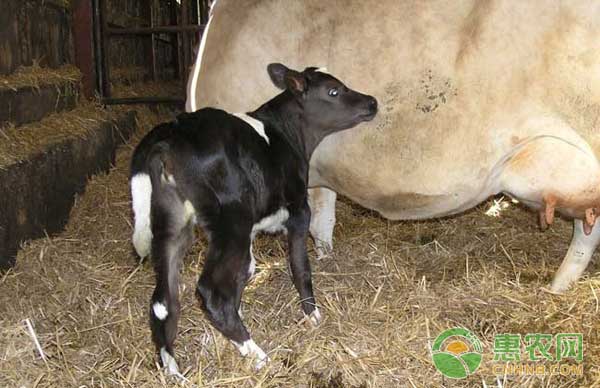Bovine foot and hoof disease is a disease often overlooked by farmers because the symptoms of bovine hoof disease are relatively light and have little effect on cattle in the short term. However, if bovine hoof disease is not treated in time for a long time, the benefit of cattle farm will be as high as possible. 20%~40%. Bovine foot and hoof disease includes, but is not limited to, bovine rot disease, bovine hoof blaze, bovine lobes, bovine cirrhosis, bovine joint sprain, bovine arthritis, which are more diverse, but overall hazards, causes and prevention programs More similar. Today, Xiaobian always has to tell you about some of the knowledge related to bovine foot and hoof disease.

First, the harm of cattle foot and hoof disease
Once a cow has a foot hoof, its limbs and hooves will have symptoms such as pain, swelling, suppuration and ulcers. It is often difficult to walk, restless and difficult to lie down, resulting in a greater restriction on activities. If the treatment is not effective for a long time, it will affect the normal feeding and rest of the cattle, which will cause the growth rate of the cattle to slow down or even increase the weight gain.
Pregnant cows will increase the risk of miscarriage after suffering from foot and hoof disease. The abortion rate is 3 to 5 times that of normal cattle. It is also prone to dystocia when not aborted to delivery. Lactation of dairy cows will greatly affect milk production and increase the incidence of mastitis. In addition, bovine foot and hoof disease may also be secondary to diseases such as bovine bacillus, bovine systemic sepsis, and in severe cases, cattle will die.
Second, the cause of cattle foot and foot disease
1. Nutritional factors
(1) Unbalanced calcium and phosphorus: The imbalance of calcium and phosphorus in the diet, such as calcium deficiency, calcium deficiency, phosphorus and calcium deficiency, and phosphorus and calcium deficiency, are likely to cause calcium and phosphorus metabolism disorders and cause bovine foot and hoof disease.
(2) Zinc deficiency: Zinc is an essential trace element in the growth of cattle. Zinc is closely related to the health of the skin. However, the hoof is a derivative of the skin. Zinc deficiency in the diet will affect the keratinization of the hoof and thus prone to occur. Rotten hoof disease.
(3) Insufficient vitamin D or decreased activity: Insufficient vitamin D or decreased activity will cause calcium and phosphorus metabolism disorders and even cattle and foot disease. (4) Unreasonable diet: Unreasonable dieting. When feeding large amounts of silage, distiller's grains and concentrates, it will cause too much stomach acid and secondary laminitis.
2. Environmental factors
When the ground is too hard and the ambient humidity is too high, the incidence of bovine hoof disease will rise linearly, so the summer and autumn season is the high season of bovine hoof disease.
3. Disease factors
When the foot-and-mouth disease occurs and the wound is cured, the hoof injury may not last for tens of days or even months, and may even be followed by other foot and hoof diseases. In addition, another leg and foot disease may occur after a foot and sock disease, for example, rot disease or arthritis may occur after the occurrence of laminitis.
4, genetic factors
The occurrence of bovine foot and hoof disease has a great relationship with genetic factors. Some cattle breeds have a relatively low incidence of limbs and hoofs, and some bovine species have relatively high incidence of limb and hoof. According to relevant data, the incidence of leg and foot disease in Charolais cattle is as high as 33.8%, and the incidence of leg and foot disease in Holstein cows is as high as 45.4%.

  Third, the prevention and treatment of cattle foot and hoof disease
1. How to prevent bovine hoof disease Bovine foot and hoof disease should be based on prevention. First of all, it is necessary to mix the diet reasonably to make the nutrient supply more balanced and comprehensive. When feeding the more acidic feed, it is necessary to add the baking soda to neutralize the acid, not to feed the forage and spoilage forage; secondly, to provide a good Living environment, timely clean up the manure and keep the pens hygienic, and properly ventilate to reduce the environmental humidity and toxic and harmful gases; finally increase the amount of cattle exercise and light time to increase the resistance of the limbs, and regularly trim the hoof .
2, how to treat cattle and leg hoof disease cattle foot and hoof disease treatment is more difficult, often treatment is not long after the disease again. The specific cause of the disease of the bovine foot and hoof should be identified and improved, and then the corresponding symptomatic treatment. Bovine hoof rot and pus should be cleaned and disinfected with 0.1% potassium permanganate solution or 5% povidone iodine solution, and then treated with systemic or topical analgesic plus antibacterial treatment, for example, naproxen With penicillin. At the same time of treatment, the diseased cattle must be installed in a relatively soft and dry cowshed and the lighting time should be appropriately increased.
The above is the harm of cattle foot and hoof disease and prevention methods. If you want to know more about farming, please pay attention to the Hui Nong School!
Ungrouped,High Quality Ungrouped,Ungrouped Details, CN
Shenzhen Guangyang Zhongkang Technology Co., Ltd. , https://www.nirlighttherapy.com